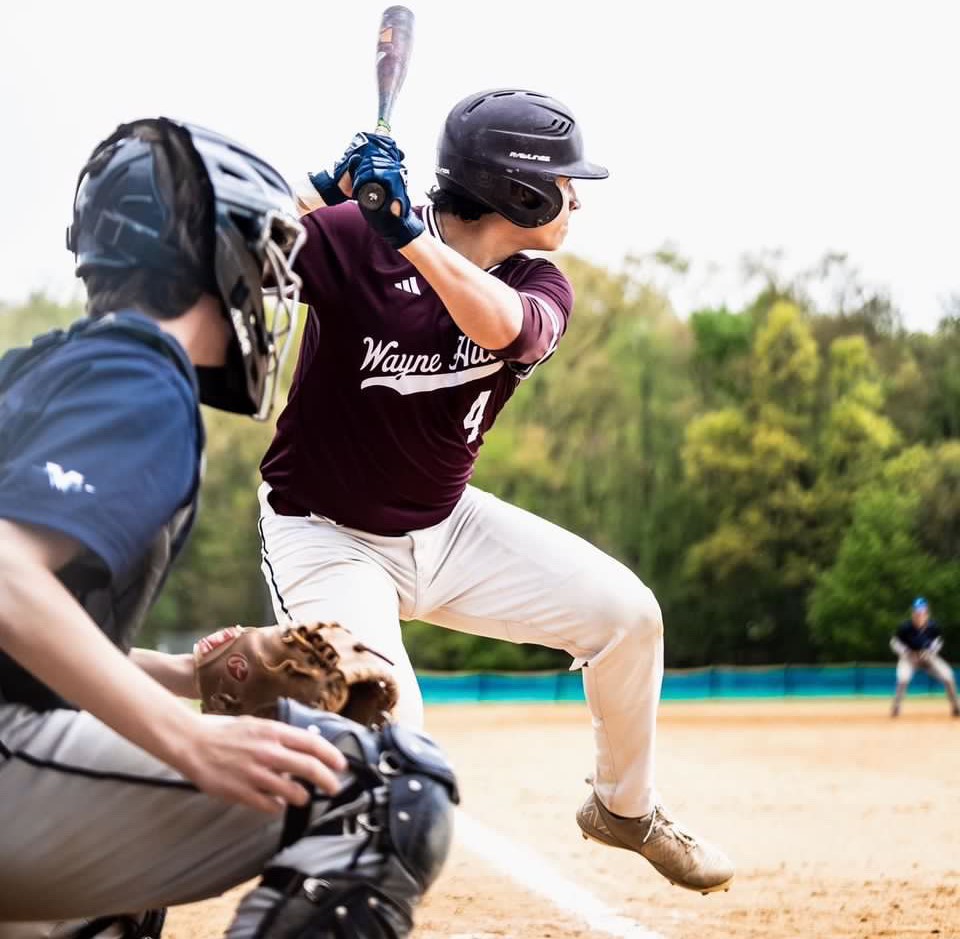
Pace University Baseball commit catcher Chris (CJ) Orrego recently finished his final spring season at Wayne Hills High School in NJ. After 62 ABs, he batted .435 (vs .226 LY) and had a .774 slugging average (vs .339 LY). He finished the year with 3x as many hits for extra bases vs. the prior year.
How did he do it?
CJ began his preparation for the 2023 season in the fall of 2022 and as always everything began with a thorough assessment which included:
-
- Lean Body Mass Evaluation
- Video Review and Analysis
- K-Vest / Blast Motion Analysis
- Movement Screen
- Strength and Power Testing
The initial assessment helped us create a custom plan for CJ’s programming during the past year and has been addressing several topics, including:
-
- Lat length and hip mobility
- His overall strength to help increase power
- Upper body swing mechanics
Lean Body Mass Evaluation
At the time of his initial assessment last fall, he was 5’8”, 175 lbs. and 16% body fat. This put him well within the suggested 2.5-3.0x height to weight range that we look for in our high performance athletes. CJ continued to maintain this optimal level, even after the completion of the spring season (which isn’t always easy). Recently he came in weighing 189 lbs., which is a 14 lbs. gain in body weight since last fall, while staying close to his lean body mass %.
Video Analysis
CJ’s hitting video analysis demonstrated a generally clean swing with only a few mechanical-disconnects.
-
- Linear Phase – High Elbow: This is caused when a hitter’s elbow is sticking out behind the hitter’s hand at toe touch. This makes it necessary to create an inefficient second move or “push” instead of a “pull” with the hands which can greatly reduce the velocity of the bat.
- Rotational Phase – Push: As we just mentioned, many athletes that present themselves with a high elbow generally end up punching inside with the back hands before the elbow drops underneath. Instead, the lower body and core should slot the elbow in turn “pulling” or “whipping “the bat through the strike zone.
These issues were addressed both in the weight room with scap stability and lat mobility work, as well as core strength to help generate more force from the middle. Inside the nets, drill work was prescribed to help CJ create better space with his upper half while also improving rotation with his lower half to create the whip referred to ealier.
Blast Motion Metrics
Although many of CJ’s Blast Motion metrics were within range or close to range, his excessive Attack Angle needed to be addressed. High Attack Angles can lead to more swings and misses and / or pop ups. Lowering his AA was probably priority #1 across his Blast metrics. The following table provides a summary of his initial primary metrics.
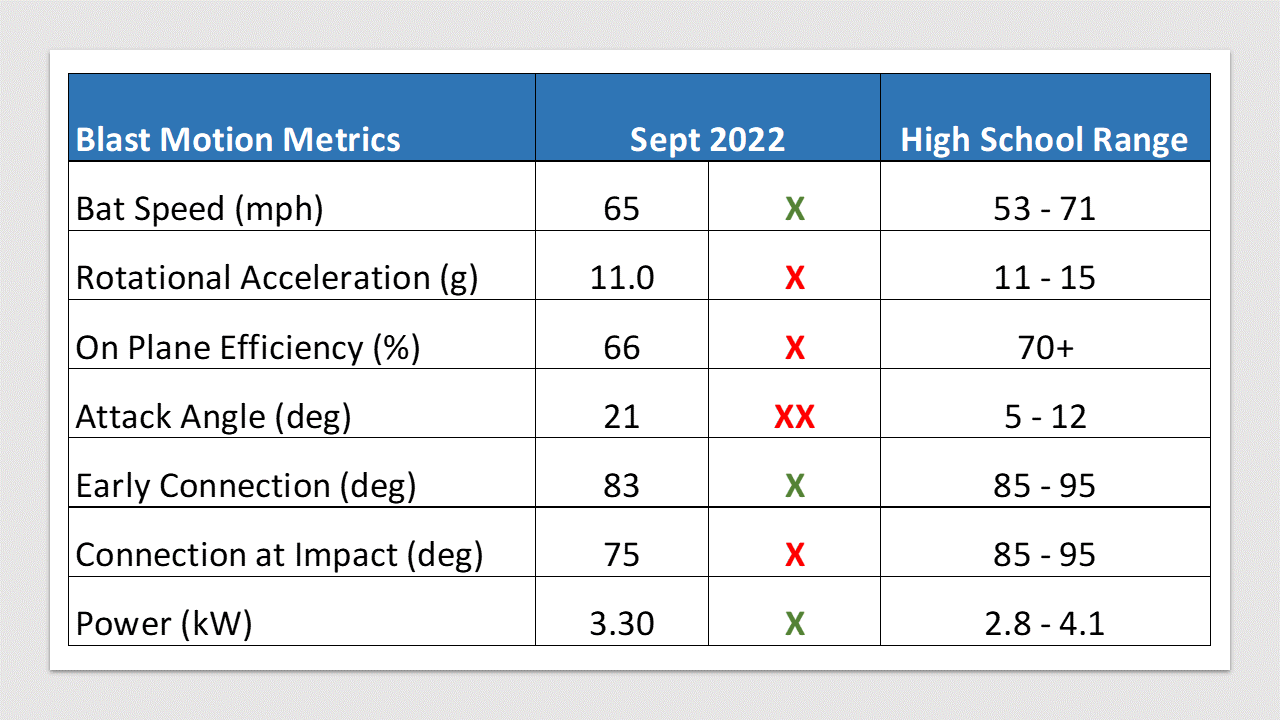
The good news is that his most recent assessment points to a reduced Attack Angle of 15 degrees. Although, this is still generally higher than we’d like to see, it is a substantial improvement from 21 degrees where he was last fall. We believe this to be a significant part of his success this past spring by helping him make solid contact on a more regular basis.
K-vest (Posture) Assessment
CJ’s initial results demonstrate relatively good overall postural patterns with a solid 1-2-3-4 kinematic sequence (pelvis, torso, shoulder, hands), which allows him to efficiently build angular velocity up the chain and be adjustable at the plate.

The big player we discovered in CJ’s K-vest summary was his Torso Side Bend at Heel Strike. CJ’s reading of -13 degrees indicated an excessive side, which we believe, was causing him to hang back. This was a big contributor to his high attack angle as well, making it hard to create upper body power without a stable base.

Movement Screen
CJ’s initial movement screen highlighted hip impingement in both hips due primarily to poor internal rotation as well as tight hamstrings and lat length. Forward fast to June of this year and we can see his lower half has cleaned up substantially.
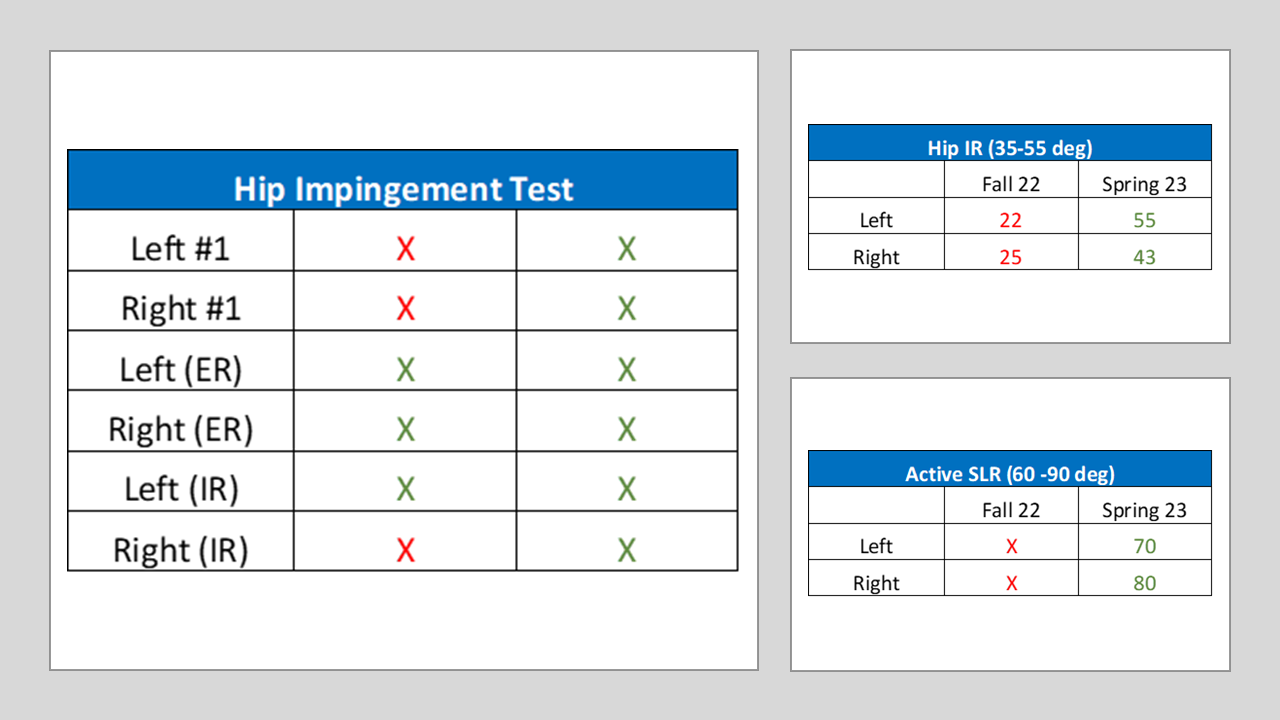
Strength and Power Testing
Strength – Although CJ’s overall strength levels were pretty good last August, we felt that he could definitely use some additional strength to help improve the deficit we saw in the “strength” side of power (strength-speed) . The following table provides his estimates for the 1RM for the 3 basic lifts. During the past year, his weight room numbers have increased significantly which has given him additional strength and higher power output at the plate.
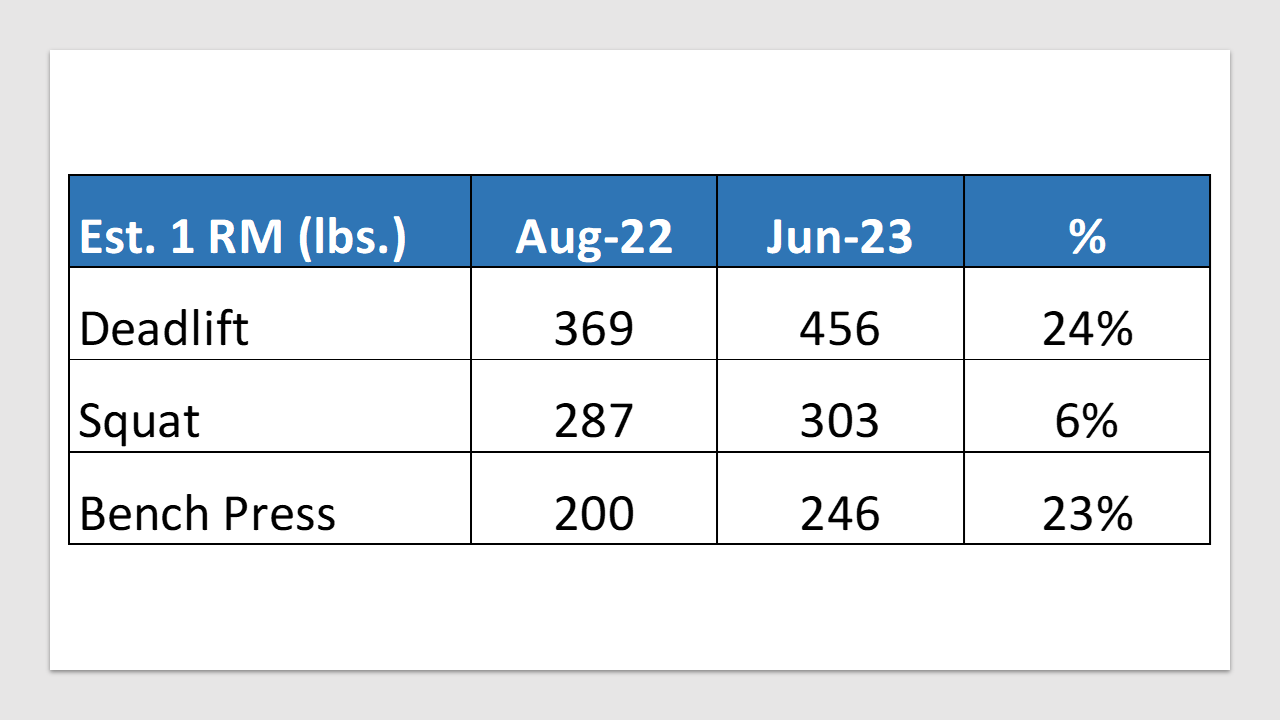
Power Production – CJ’s initial power testing results showed an athlete who relied heavily on his elasticity to produce power. This is displayed by the large gap in peak power output (PPO) in his elastic jump (CMJ) and his more “force” based jump (squat) below.
Fast forward to this June, and we can see that we have closed the gap between the two jumps – mostly due to additional strength gains mentioned above. The result is a more “well-balanced” athlete and an overall higher PPO in both jumps as well as his lateral RSI. The big takeaway here is that we needed to give him more of what he needed (force/strength), without talking away the traits that make him already athletic (velocity/ elasticity).
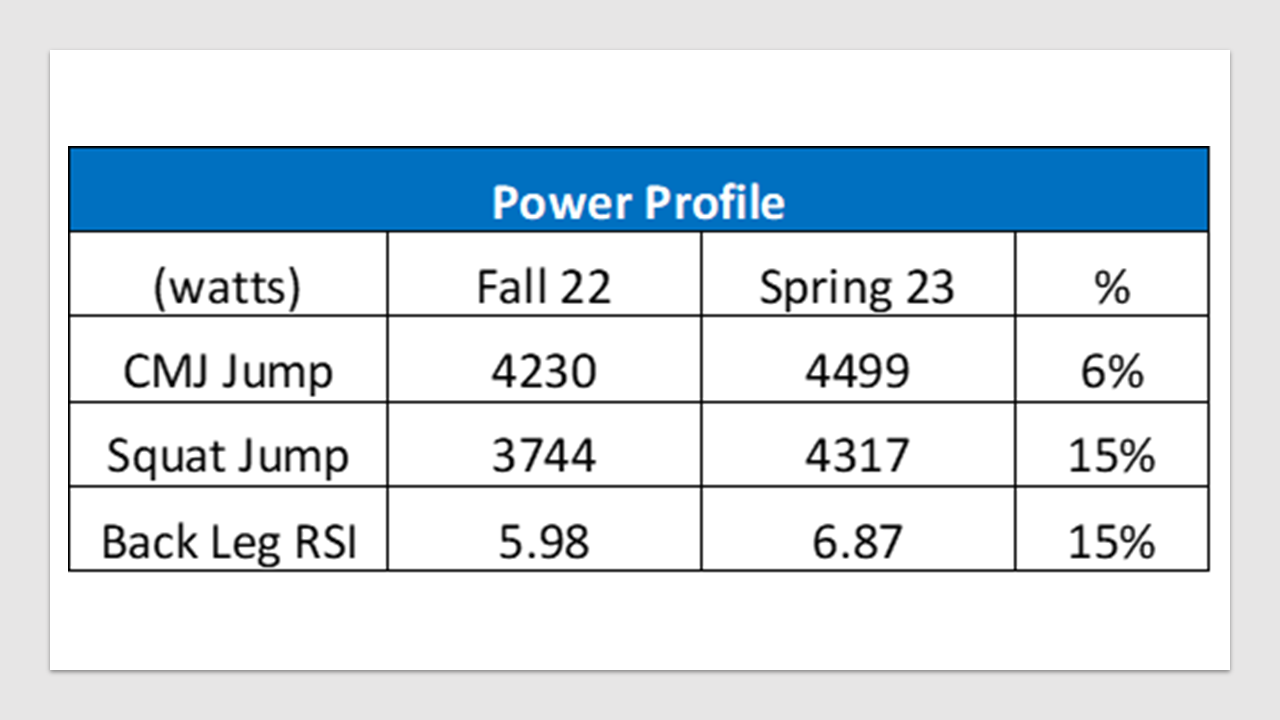
Recent Results
With a lower attack angle, improved mobility and additional strength and power production, CJ’s performance this spring speaks for itself. As highlighted earlier his .435 batting average was nearly 2x as high as the prior year, which in itself is quite an accomplishment. The following is a summary of his year-over-year stats.

Congrats CJ on a great spring season. Keep up the hard work and looking forward to your continued success!
See ya’ in the gym…
By Nunzio Signore, Andrew Pezzutto and Bahram Shirazi
You live too far to train with us in-house at RPP? You can now train with us on a REMOTE basis.


